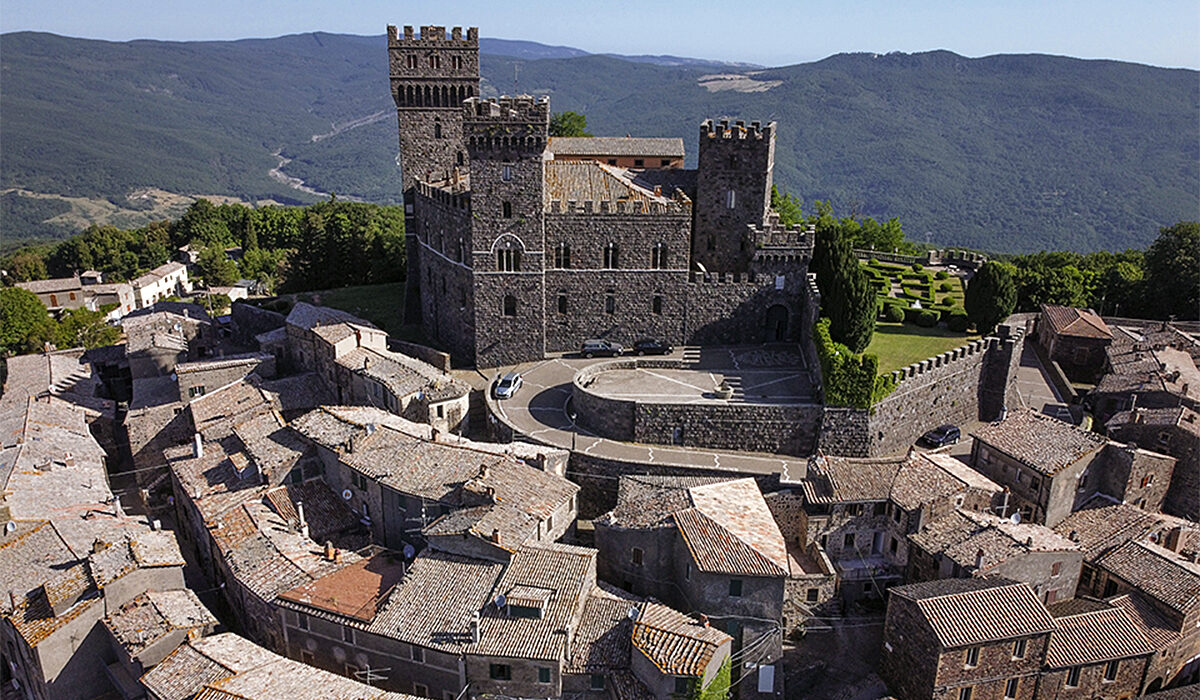In the heart of the Alta Tuscia region, in northern Lazio, stands an ancient jewel of history and architecture: the Torre Alfina Castle with its marvellous Renaissance garden. This majestic medieval fortress, whose origins are shrouded in mystery, is a silent witness to the glorious past of the region
Table of contents:
- Birth and history of the castle
- Centre of political power
- Renaissance and transformation
- The Contemporary Period
- The future of Torre Alfina Castle
The Origins of Torre Alfina Castle
The construction of the Castle of Alfina Tower probably dates back to the early Middle Ages, a period in which the whole of Europe flourished fortified structures with a mainly defensive purpose. They were commissioned by local nobles or lords and placed on hills or heights to allow strategic observation of possible military attacks or plundering by marauders. The birth of active villages around the fortress then allowed commercial activities to flourish. The precise origins of the Torre Alfina Castle remain shrouded in mystery. There is no single name associated with the construction of the fortress, but the First historical annotations can be found in the 'Commentari Istorici'. of Monaldo Monaldeschi della Cervara. These documents testify to the existence of a watch tower, later transformed into a castle during the Longobard reign of King Desiderius in the 8th century.
Strategic Centre in the Middle Ages
The geographical position of Torre Alfina Castle, between the Papal States and the Grand Duchy of Tuscany, gave it a key role in the control of important communication routes. The population of Alfina increased dramatically, transforming the village into a centre of considerable political, commercial and cultural significance. The Monaldeschi family, followed by the Cervara branch, gave rise to the Alfina Seigniory, which dominated the region from around 1200 to 1600. During this period, the castle became the fulcrum of their power, gradually incorporating new surrounding lands and villages.
Renaissance Transformation
The Renaissance era was the perfect occasion for a impressive transformation for the Torre Alfina Castle, from a simple defensive structure into a sumptuous stately residence. Thanks to the contribution of local artists, the interiors were enriched with decorations and frescoes and the battlements running around the castle perimeter were softened by a renaissance garden Italian-stylemaking the castle an oasis of beauty and modern culture.
Contemporary Revival
In the second half of the 17th century, and for about two centuries, the Castle of Torre Alfina passed by inheritance to the Tuscan Marquises Bourbon del Monte, who continued to maintaining the prestige of the castle and the village of Alfina. With the unification of Italy and the extinction of the Bourbon del Monte lineage, the castle experienced a rebirth, after being purchased by a wealthy Belgian Jewish banker, Count Edoardo Cahen d'Anvers. Awarded this title thanks to the merits of his father, Giuseppe Mayer, (the only European banker to finance the Risorgimento), in 1885 Edoardo Cahen was named Marquis of Torre Alfina by Umberto I. The new ownership initiated a majestic renovation of the historic mansionaccording to the project entrusted to the Sienese architect Giuseppe Partini.
Present and Future
The Torre Alfina Castle is a living witness to the historical and cultural transformations of the area and still today attracts and fascinates visitors from all over the world. La refined atmosphere of its interior and Renaissance garden with its wonderful courtyards is the perfect wedding location fairy-tale and elegant. It also offers the perfect setting for photo shoots, film and music, bringing to life the traditions and extraordinary historical heritage of Alta Tuscia Laziale.

